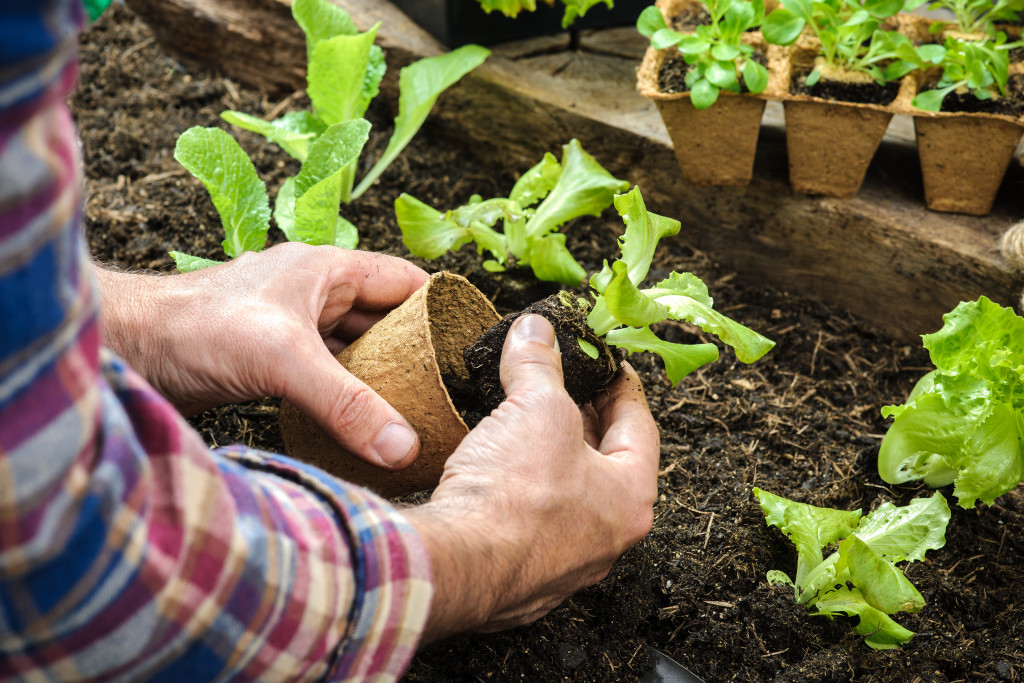Almost everyone loves spending time outdoors in their gardens. There’s nothing better than getting your hands dirty and watching your plants grow. But what do you do when winter comes, and your garden starts to die? Well, with some planning, you can build a garden that lasts all year long! Here’s how:
1. Choose the right plants.
When selecting plants for your garden, be sure to choose hardy varieties that can withstand colder temperatures. Some good options include evergreens, roses, and daffodils. These plants will keep your garden looking lively even in the dead of winter. You can also add some potted plants to your garden. Just be sure to bring them inside when the weather gets too cold.
When choosing plants, make sure also to consider the amount of sunlight they will need. Some plants need full sun, while others can tolerate partial shade. Be sure to read gardening information about the plants before purchasing. You can also talk to a gardening expert at your local nursery for more guidance.

2. Keep a plant storage space nearby.
The cold winter can be tough on some plants, so it’s essential to have a place where you can store them indoors. A shed will work perfectly for this. Just be sure to outfitted with shelves and plenty of lighting. This way, you can continue caring for your plants even when it’s too cold to do gardening outside.
If you don’t already have a shed where you can store your plants, there are plenty of outdoor garden shed plans available online. Just be sure to pick a size and style that fits well with your outdoor space. This way, your shed will look like it belongs there and won’t stick out like a sore thumb. You can also find some great garden shed ideas in magazines or online.
3. Mulch your garden beds.
Mulching helps insulate the soil and roots of your plants, keeping them warm during the cold winter months. It also helps prevent weed growth and retains moisture in the soil. There are many different types of mulch available, so be sure to choose one that’s right for your plants. Organic mulches, such as wood chips or shredded leaves, are a great option.
In order to apply mulch properly, be sure to first remove any dead leaves or debris from your garden beds. Then, apply a layer of mulch that’s about 2-3 inches deep. Be sure to leave some space around the base of your plants so that the stems and leaves don’t touch the mulch. If you’re not sure how much mulch you need, many online calculators can help. They’ll take into account the size of your garden and the type of mulch you’re using.
4. Add some outdoor lighting.
Adding outdoor lighting to your garden will not only make it look more inviting, but it can also help your plants grow. Some plants need more light than others, so be sure to choose the right type of bulbs for your plants. LED bulbs are a great option since they use less energy and last longer than traditional incandescent bulbs.
When installing outdoor lighting, be sure to keep safety in mind. Avoid using extension cords where possible, and be sure to keep the lights away from any flammable materials. Also, be sure to turn the lights off when you’re not using them so that you don’t waste energy. You can even install solar-powered lights to help save on your energy bill.
5. Try growing some vegetables.
If you want to add some color to your garden during the winter months, try growing some vegetables. Some good options include kale, cabbage, and carrots. These vegetables can withstand colder temperatures and will add some much-needed color to your garden. You can also try growing some herbs, such as rosemary or oregano.
Vegetables are not only a great way to add color to your garden, but they’re also a great source of food. If you’re unsure how to get started, plenty of resources are available online. You can also talk to a gardening expert at your local nursery for more guidance. Some vegetables, such as carrots, can even be grown in pots. This way, you can move them indoors if the weather gets too cold.
With a little planning, you can easily build a garden that lasts all year long! Choosing the right plants and protecting them from the cold weather allows you to enjoy your garden no matter what time of year it is. So get out there and start gardening! Your green thumb will thank you for it.

